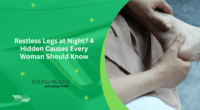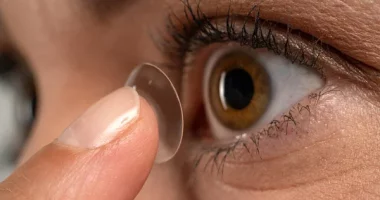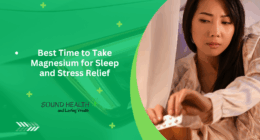Dealing with the discomfort of a bunion can impact daily life, from selecting your next pair of shoes to deciding how confidently you’ll tackle your weekend plans. If that bump at the base of your big toe has become more than a minor annoyance, you’re not alone—millions struggle with the throbbing ache that bunions bring. Fortunately, with the right self-care strategies, significant pain relief is very achievable—often, without ever setting foot in an operating room.

What Is a Bunion? Expert Definition and Insights
A bunion is a bony enlargement that forms at the base of the big toe joint, causing the toe to lean toward the second toe and resulting in a noticeable bump. According to Dr. Michael J. Trepal, DPM, a distinguished podiatrist and professor of surgery at the New York College of Podiatric Medicine in New York City, women are especially vulnerable due to footwear choices and anatomical differences. Statistics show that bunions affect up to 23% of adults aged 18–65, with women representing a significant majority among reported cases. Many recall the moment pain first appeared after wearing narrow shoes or standing for extended periods—an experience often shared in clinics.
Women Are More Prone to Bunions: Why and How
Women experience bunions more frequently than men, and this tendency is influenced by several factors including genetics, foot structure, and footwear choices. Women’s feet generally have a narrower shape and greater joint flexibility, which predisposes them to bunion formation. Moreover, fashion often plays a role—high heels and tight, narrow-toed shoes increase pressure on the big toe joint, accelerating bunion development. Studies highlight that approximately 70–80% of bunion sufferers are women, a disparity linked to both lifestyle and biological differences. Understanding this increased susceptibility encourages women to adopt preventative measures and seek suitable footwear early to manage discomfort effectively.
Fast, Natural Bunion Relief: Five Self-Care Remedies That Really Work
Seeking fast pain relief from a bunion can mean the difference between a productive day and one spent nursing a sore foot. Before considering invasive solutions, many effective at-home remedies are available.

Stretch Your Toes: Daily Exercises for Lasting Comfort
Gentle stretching and strengthening exercises improve toe alignment and relieve pressure at the bunion site. Simple movements, such as toe stretches, toe curls, or using a resistance band, can be performed for a few minutes each day to enhance flexibility and reduce stiffness. A widely recommended exercise is to place a thick rubber band around all five toes, gently spread them apart for a few seconds, and repeat several times. Such routines promote better joint mobility and ease inflammation without requiring specialized equipment. Anecdotally, individuals have found that, over weeks, stretching routines decrease morning soreness and improve confidence in movement.
Apply a Painkilling Cream: Topical Solutions for Immediate Relief
When pain spikes, a topical analgesic cream with ingredients like menthol, lidocaine, or capsaicin delivers quick, localized relief. These creams can numb the painful site, reduce inflammation, and provide soothing comfort within minutes. For those wary of oral painkillers and their side effects, topical gels or sprays—available over-the-counter—become a practical alternative. Remember to follow label directions closely, and never apply broken skin. Many people find that, when applied before putting on shoes or after a long walk, these products make daily activities much easier.
Try Orthotics: Supportive Inserts for Everyday Shoes
Custom or prefabricated shoe inserts—orthotics—redistribute pressure away from your bunion and help restore more natural toe positioning. Well-fitted orthotics can cushion the affected joint, absorb shock, and correct abnormal gait patterns that exacerbate discomfort. According to a 2023 survey published by the American Podiatric Medical Association, over 60% of bunion sufferers report a notable reduction in pain when using orthotics consistently. Whether sourced through a podiatrist or reputable retail brands, these insoles offer a noninvasive remedy that supports everyday mobility.
Pad Your Feet: Protect the Sensitive Bunion Area
Specialized bunion pads, made of silicone or moleskin, provide a protective barrier around the protruding joint, reducing friction and alleviating discomfort inside shoes. Easily found at most pharmacies, these pads are designed to cushion the area, absorb shock, and minimize direct pressure. When carefully placed, they allow walking or standing for longer periods, turning uncomfortable footwear into a tolerable option for essential outings. A friend once shared that after trying bunion pads during a vacation filled with sightseeing, they walked twice as far without the usual burning sensation.
Swap Your Shoes: Choose Comfort Over Fashion
Perhaps the most immediate relief comes from changing footwear. Shoes with a wide toe box, soft upper material, and low heels minimize crowding and irritation at the bunion site. Steer clear of pointed, narrow, or high-heeled shoes, as these exacerbate pressure and speed up joint changes. Many podiatrists recommend brands known for supportive, anatomical designs that prioritize foot health. For many individuals, simply switching to more sensible footwear results in a dramatic drop in daily pain, making a convincing case for prioritizing comfort over short-lived fashion statements.
Choose shoes with:
A wide toe box
Ample arch support
Soft, stretchable uppers
Low to moderate heels
When Should You See a Doctor for Bunion Treatment?
While self-care can handle most mild-to-moderate bunion pain, certain symptoms should prompt a visit to a healthcare provider. If swelling, warmth, or redness indicates possible infection, or if pain hinders daily activities even after consistent home remedies, medical evaluation is essential. Rapid joint changes, persistent numbness, or the inability to comfortably wear shoes are also warning signs you shouldn’t ignore. For those who develop secondary issues such as hammertoes, calluses, or arthritis, early intervention with a podiatrist can prevent further complications and offer access to tailored treatment plans, which may include prescription-strength orthotics, physical therapy, or, in severe cases, minimally invasive surgery.
Also Read | How to Relieve Frozen Shoulder Pain During Menopause









